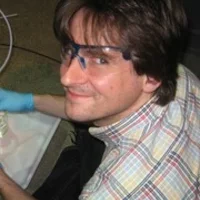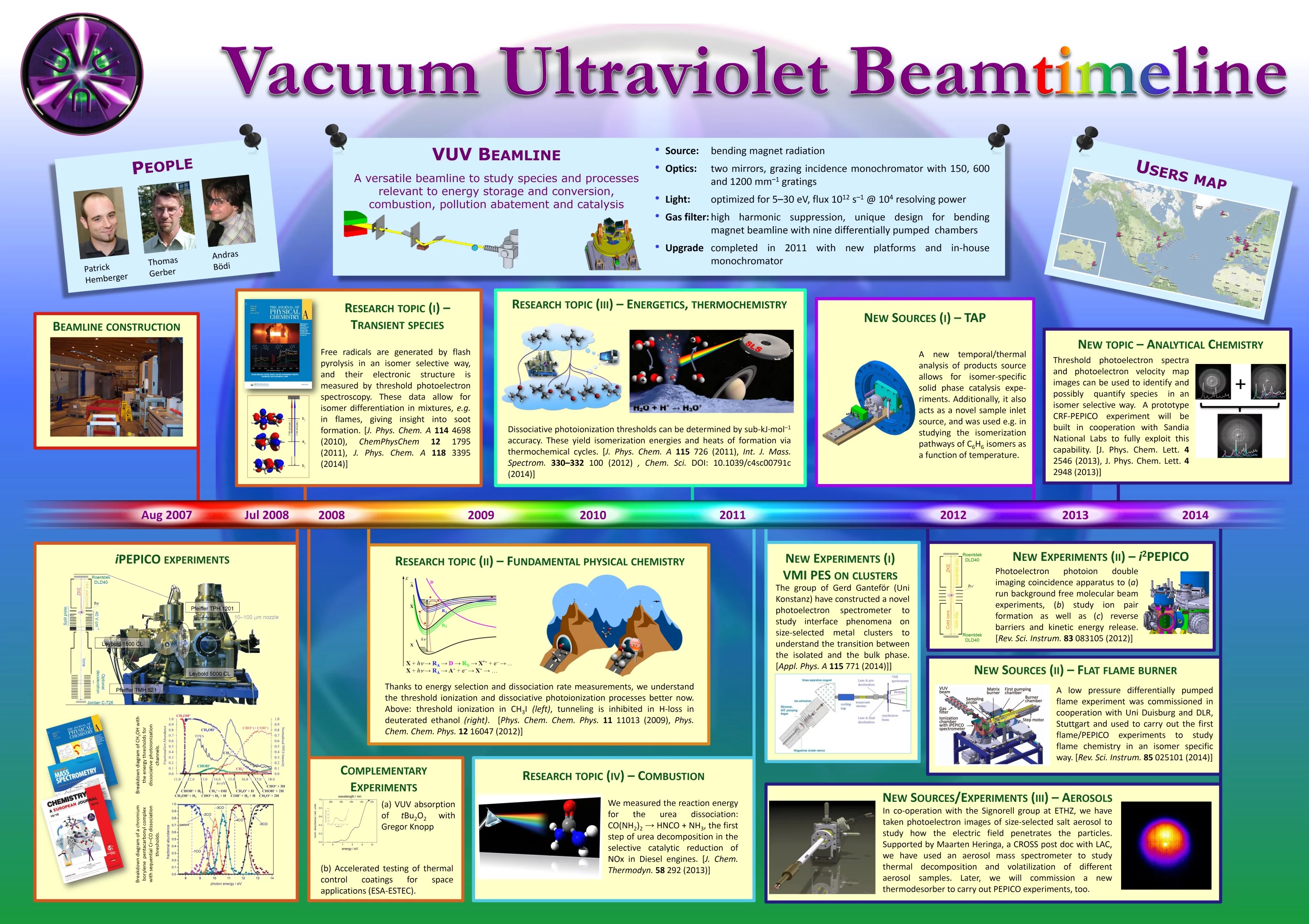
The VUV beamline is one of the Phase 2 beamlines of the SLS 2.0 upgrade and will begin commissioning in June 2026.
The beamline is operated by the Reaction Dynamics Group in the Laboratory of Femtochemistry and Synchrotron Radiation. The in-house research focuses on chemical reaction dynamics in harsh environments such as flames and reactors as well as in the cationic state. Photoelectron photoion coincidence techniques offer universal, selective, sensitive and multiplexed chemical analysis tools that allows us to detect elusive and short-lived species isomer-selectively. Coupled to a wide array of effusive and molecular beam sources, we can study stable and weakly bound species along with radicals and carbenes, which govern e.g. ignition. In addition to insights into chemical dynamics, the energetics and the thermochemistry of the sample are also revealed.
Our versatile endstations offer external users the possibility to study gas-phase dynamics, too.
Apart from combustion processes, the catalytically relevant reactivity and size effects in metal cluster ions are also studied. On the side branch of the beamline, we operate a cluster source to perform cluster ion mass-selected photoelectron spectroscopy measurements.
The beamline is located at pillars 40-41 at the X04DB bending magnet of the SLS and is optimized for photon energies between 5 and 30 eV. Higher energy light is also available.
Research fields
Combustion chemistry
Pyrolysis, photolysis and flames as novel sources to generate reactive molecules as well to elucidate chemical reaction dynamics and kinetics.
Spectroscopy and dynamics
High resolution threshold photoelectron spectroscopy to produce internal energy selected ions and probe photochemical processes energy. Determination of unimolecular reaction energies, binding energies, enthalpies of Formation, and other thermochemical properties.
Size-selected Cluster photoelectron spectroscopy
Tuneable VUV photoelectron spectroscopy to study size effects of cluster ions relevant to e.g. chemisorption.
Catalysis
Online analysis of intermediates and products formed in catalytic processes.
Atmospheric chemistry
Probing aerosols by soft-ionization aerosol mass spectrometry and volatilizing large and fragile organics and biomolecules.
| Historic beam parameters in SLS, stay tuned for SLS 2.0 update mid-2026 | |
|---|---|
| Energy range | 3-150 eV, higher harmonic free 5-21 eV |
| Resolution | 10-4 |
| Photon Flux | 1012 s-1 @ 10-4 BW (400 mA ring current) |
| Beam Diameter | 2x1 mm to 2x4 mm |

